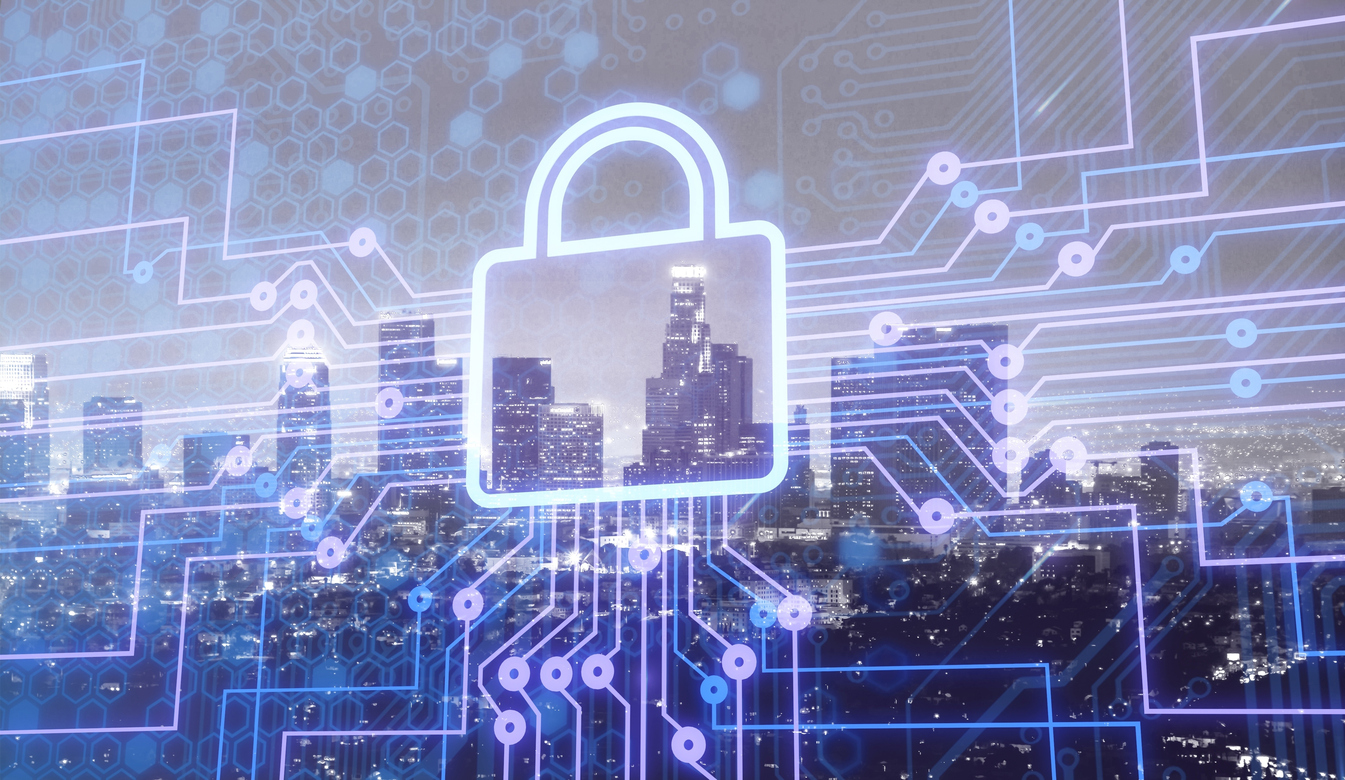Keeping Your Identity Safe: A Human Approach in the Age of AI.
Imagine losing control of your life's most personal details. Your bank accounts, your credit, even your reputation – all compromised by an invisible threat. That chilling scenario isn't just a plot from a movie anymore. In our increasingly digital world, identity theft is a constant, evolving battle, and with cybercriminals getting smarter – even using advanced AI to trick us – it's more critical than ever to arm yourself.
Understanding how this all works and taking some sensible steps can truly make a difference, protecting your hard-earned money and, most importantly, your peace of mind. The numbers don't lie. The eSentire Threat Response Unit (TRU) shared some pretty stark news on July 10, 2025, revealing a whopping 156% jump in identity-driven attacks since 2023. These aren't just minor incidents; they now make up a massive 59% of all attacks in early 2025. It's a clear sign that we all need to be on our game.
Your Digital Home: Making it Unbreakable
Think of your online presence as your digital home. Just like you'd lock your front door, you need to lock down your accounts and devices.
The absolute first step? Strong, unique passwords for everything. Seriously, ditch the "password123"! Use a good password manager. These smart tools can create super complex passwords and remember them for you, so you don't have to juggle dozens in your head.
And whenever you see it, turn on multi-factor authentication (MFA). It’s like adding a second lock – maybe a code sent to your phone or a fingerprint scan – making it way tougher for someone to get in, even if they somehow guess your password.
Now, even with MFA, some clever criminals are using "Adversary-in-the-Middle" tools like Tycoon2FA (which eSentire says is a big problem now). So, the experts at eSentire TRU are really pushing for something even stronger: "Phish-resistant Authentication." This means moving towards things like FIDO2/WebAuthn and passkeys. It's about building a digital fort that's much harder to breach.
That Suspicious Message: Trust Your Gut
We all get those emails and texts that just feel... off. With AI, these phishing attempts are getting incredibly good at mimicking banks, government agencies, or even your favorite online store.
Trend Micro's report from July 9, 2025, "Deepfake it 'til You Make It," put it plainly: "AI-generated media is not just a future risk, it's a real business threat."
David Sancho, a senior threat researcher at Trend Micro, paints a vivid picture: "We're seeing executives impersonated, hiring processes compromised, and financial safeguards bypassed with alarming ease." This is a wake-up call. We can't just trust our eyes anymore.
If a message seems urgent, too good to be true, or asks for personal info, hit pause. Always double-check the sender's actual email address. If you’re unsure, call the company directly using a number you know is real, not one from the suspicious message. Your skepticism is your best friend here.
Your Money Matters: Keep a Close Eye
Think of your bank and credit card statements as your financial radar. Regularly looking them over for anything you don't recognize is crucial. Most banks can send you alerts for unusual activity, so definitely sign up for those.
And here’s a big one: get your credit reports from the major UK credit bureaus (Experian, Equifax, and TransUnion) at least once a year. It lets you catch any accounts opened in your name without you knowing.
As the folks at Identity Management Day said in April 2025, "The concept of identity is at an inflection point where it will explode into multiple areas." This isn't just about your identity anymore; it's about all the digital identities out there.
A powerful tool you might not know about is a credit freeze. It stops new lenders from checking your credit without your say-so, making it really tough for fraudsters to open new lines of credit using your name. Yes, you'll need to unfreeze it if you apply for something, but the peace of mind is worth it.
This is especially true when you hear that "Synthetic identities now account for 85% of financial fraud cases," according to the Veridas Identity Fraud Report 2024. This is where criminals mix real and fake details to create a whole new "you" – a credit freeze can slam the door on that.
Beyond the Screen: Protecting Your Papers
Even with all the digital threats, old-school physical security still plays a huge role. Got old bank statements, utility bills, or credit card offers? Don't just toss them!
Shred anything with your name, address, or account numbers. This stops "dumpster divers" from getting their hands on your info.
Also, be mindful of what you share online, especially on social media. Little details like your full birthday, pet's name, or even your vacation plans can be pieced together by identity thieves, sometimes with the help of AI.
The Identity Theft Resource Center (ITRC) noted in June 2025 that while fewer people are reporting identity theft overall, those who do are losing more money. This suggests criminals are getting more precise, perhaps because AI is helping them target us better.
As James Scott, a senior fellow at the Institute for Critical Infrastructure Technology, wisely puts it, "There's no silver bullet in cybersecurity; only layered defense works." It’s about building a strong wall with many bricks – digital and physical – to keep your identity safe and sound.
Related: How Employee Monitoring Software Can Help Prevent Time Theft and Improve Accountability
Identity Theft Protection: Your Essential FAQ
Protecting your identity in today's digital landscape requires proactive steps and up-to-date knowledge. These frequently asked questions address critical concerns and offer expert-backed advice to help you stay secure.
Q1: How has AI changed the landscape of identity theft, and what's the latest data showing?
AI has dramatically escalated the sophistication and scale of identity theft. It makes scams more convincing and attacks harder to detect. Cybercriminals are now using AI to generate highly realistic deepfakes for impersonation. They also craft incredibly persuasive phishing messages and automate the creation of synthetic identities.
According to the eSentire Threat Response Unit (TRU), identity-driven threats surged by a staggering 156% between 2023 and 2025. They now constitute 59% of all confirmed threat cases in Q1 2025. This highlights a fundamental shift in adversarial tactics, as attackers increasingly bypass traditional vulnerabilities to target user credentials directly.
Furthermore, Trend Micro's July 9, 2025 report, "Deepfake it 'til You Make It," explicitly states that "AI-generated media is not just a future risk, it's a real business threat." Senior threat researcher David Sancho emphasizes the alarming ease with which executives are being impersonated and financial safeguards bypassed. The Veridas Identity Fraud Report 2024 also underscores this, noting that "Synthetic identities now account for 85% of financial fraud cases," often facilitated by AI-driven identity fabrication.
Q2: What are the most effective authentication methods in an era of advanced phishing, and what should I avoid?
In an era where even sophisticated multi-factor authentication (MFA) can be compromised by advanced phishing tools like Tycoon2FA, the focus is shifting to phish-resistant authentication. This means moving beyond traditional SMS or email-based MFA, which can be intercepted or tricked.
The eSentire TRU strongly advises, "Identity-based threats need a new approach to defence: Phish-resistant Authentication: Stop using MFA and move to alternative methods such as FIDO2/WebAuthn and passkeys." These technologies are designed to make it significantly harder for attackers to steal your login credentials, even if they manage to direct you to a fake website.
When choosing a password manager, opt for one that supports AES-256 encryption and offers strong 2FA integrations, including hardware security keys. Companies like NordPass, 1Password, and Keeper are often highlighted in 2025 reviews for their robust security features. Critically, always be suspicious of unsolicited requests for authentication codes or logins, as these are common tactics in AI-enhanced phishing scams, as detailed by Experian's "The Latest Scams You Need to Be Aware of in 2025" report.
Q3: How often should I check my credit report, and what's the benefit of a credit freeze in the UK?
Regularly checking your credit report is a cornerstone of proactive identity theft detection. It's highly recommended to obtain and scrutinize your credit reports from the major UK credit bureaus (Experian, Equifax, and TransUnion) at least annually. Many financial experts suggest doing so even more frequently, perhaps every few months, to catch any suspicious activity early.
The primary benefit of a credit freeze (sometimes called a credit lock) in the UK is to prevent new creditors from accessing your credit report without your explicit permission. This effectively halts fraudsters from opening new accounts or taking out loans in your name, even if they have obtained your personal details.
While it means you'll need to temporarily "unfreeze" your credit when applying for new credit yourself, the enhanced security against synthetic identity fraud and other forms of account opening fraud makes it an invaluable tool. The Veridas Identity Fraud Report 2024 highlights the pervasive nature of synthetic identity fraud, underscoring why a credit freeze is such a powerful preventative measure.
Q4: Beyond digital safeguards, what physical steps are crucial for identity theft protection in 2025?
Even in our digital age, physical document security remains vitally important. Especially as criminals refine their multi-pronged attacks. Shredding documents containing sensitive personal and financial information before disposal is absolutely crucial. This includes old bank statements, utility bills, credit card offers, and anything with your name, address, or account numbers. This prevents "dumpster diving" identity theft.
The Identity Theft Resource Center (ITRC) noted in June 2025 that while overall identity theft reports saw a slight decrease, the average loss per victim increased. There was also a 71% increase in reports of stolen documents containing personal information (such as driver's licenses, Social Security cards, and birth certificates). This underscores that criminals are still targeting foundational documents.
Additionally, be cautious about the personal details you share in public, particularly on social media. Seemingly innocuous information can be pieced together by AI-driven reconnaissance. As James Scott, a senior fellow at the Institute for Critical Infrastructure Technology, wisely advises, "There's no silver bullet in cybersecurity; only layered defense works." This reinforces the need for a multi-faceted approach. A comprehensive strategy must integrate both digital vigilance and rigorous physical security practices.
Sources
Here are the key organizations, reports, and experts referenced in this article:
- eSentire Threat Response Unit (TRU): Cited for reports on identity-driven threats (July 10, 2025 report) and the prevalence of Tycoon2FA.
- Trend Micro: Referenced for their "Deepfake it 'til You Make It" report (July 9, 2025).
- David Sancho: Senior threat researcher at Trend Micro.
- Experian: One of the major UK credit bureaus; also cited for "The Latest Scams You Need to Be Aware of in 2025" report.
- Equifax: One of the major UK credit bureaus.
- TransUnion: One of the major UK credit bureaus.
- Identity Management Day: Quoted from an April 2025 expert statement.
- Veridas Identity Fraud Report 2024: Cited for statistics on synthetic identity fraud.
- Identity Theft Resource Center (ITRC): Referenced for observations on identity theft trends and document theft (June 2025 data).
- James Scott: Senior fellow at the Institute for Critical Infrastructure Technology.
- NordPass, 1Password, Keeper: Examples of reputable password manager companies (mentioned in the context of 2025 reviews).











